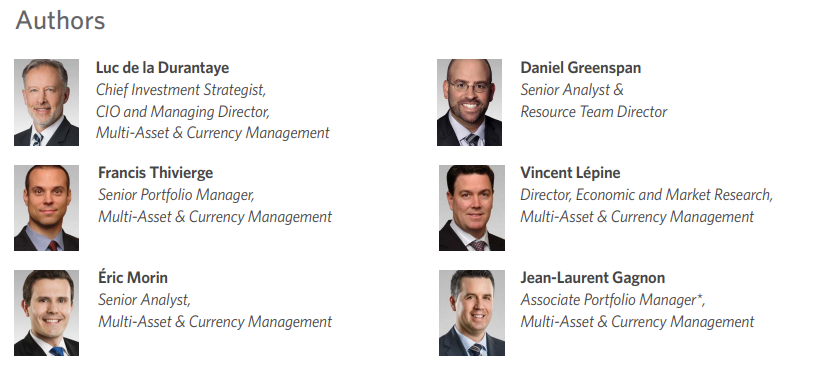In many parts of the world, stagflation—the bitterest of economic pills—has a made a comeback. Uncomfortably high and sticky inflation is forcing inflation-fighting central banks to engineer a not-so-soft landing for the economy in order to win the battle. For decades, the dominant view has been that such a nasty concoction was no longer possible, given the central banks’ commitment to keep inflation in line with targeted levels. However, an unhappy confluence of events has apparently pulled us back to the days of disco. China’s zero-Covid policy, Ukraine’s invasion and a pandemic legacy of excessive monetary and fiscal stimulus has led to supply chain disruptions, commodity shortages and excess demand igniting inflationary pressures not seen since the 1970s.
While growth prospects continue to dim for the global economy, this has, to some extent, already been priced by forward-looking financial market participants. To ensure a more lasting economic recovery, however, central banks will have to win the battle against inflation for financial markets to be able to deliver less volatile returns.
Asset class highlights
Equity: After a 20% correction, equities have, to some extent, already priced much of the challenges facing the global economy. Valuation has come down but is still not cheap. Right now, given the downside risk and headwinds, we advise investors to be cautious and patient.
Fixed Income: We recommend overweighting in emerging market (EM) local bond markets where central banks are about to turn neutral (from hawkish), and that are still offering positive hedged carry. As for EM U.S. dollar (USD) debt, better opportunities will likely emerge later this year. Although valuations are becoming appealing in some cases, the timing to increase positions is not ripe just yet.
Currencies: Given the USD’s deep overvaluation currently being observed on a broad-based basis, the next USD liquidity squeeze could potentially be quite severe. Moving further out into the forecast horizon, the USD’s uptrend will likely be increasingly challenged. For this reason, we are expecting heightened volatility in currency-land.
Global Overview
Blame it all on stagflation’s comeback
The first three quarters of the year were particularly painful for investors, with traditional asset classes such as equities and
bonds registering large declines, making this one of the worst nine-month stretches for balanced portfolios in decades. The hit
on balanced portfolios now matches the one experienced over the first nine months of the 2008 liquidity crisis. What explains
this painfully long setback? Blame it all on one thing: stagflation’s comeback. In many parts of the world, stagflation—the bitterest of economic pills—has made a comeback. Uncomfortably high and sticky inflation is forcing inflation-fighting central banks to engineer a not-so-soft landing for the economy in order to win the battle. For decades, the dominant view has been that such a nasty concoction was no longer possible, given the central banks’ commitment to keep inflation in line with targeted levels. However, an unhappy confluence of events has apparently pulled us back to the days of disco. China’s zero-Covid policy, Ukraine’s invasion and a pandemic legacy of excessive monetary and fiscal stimulus has led to supply chain disruptions, commodity shortages and excess demand igniting inflationary pressures not seen since the 1970s.
The shock is global and major central banks need to maintain and, in some cases, regain their inflation-fighting credentials.
This means the world is experiencing its first truly synchronized global monetary policy tightening act. All around the developed world, central banks are all attempting to land, as gently as possible, their jumbo-jets on the same narrow landing
strip. White-knuckled investors are impatiently waiting for confirmation of a successful soft landing. With such difficult
navigation conditions, investors should account for the rising probability of a harder-than-wished-for landing of the global
economy over the coming year.
It is important to recognize that we are now moving in the late stages of the global monetary policy tightening campaign and
consequently that global financial conditions have already tightened considerably—that is, over a long enough period to act
as a substantial drag on growth. The damages to the economy are already apparent in all the interest-sensitive sectors of the
economy and in the real estate sector in particular. There is now mounting evidence that a global housing downturn is in the
making, with intensifying downward pressures on property prices in both residential and commercial real estate.
In light of all these developments, our global growth forecast has been revised lower to 1.0% growth on average between the fourth quarter of 2022 and the third quarter of 2023. We estimate that a global downturn of this magnitude is a necessary condition for a better and more sustainable recovery in the longer term as inflation returns closer to central banks’ targets. With the balance of risks to the global outlook overwhelmingly tilting to the downside, should policy relief be expected soon? While stubbornly elevated inflation certainly doesn’t justify having central banks flipflopping back into easing mode, they will likely be moving to the sidelines at some point over the forecast horizon to evaluate the progress made and the work that still needs to be done.
While growth prospects continue to dim for the global economy, this has, to some extent, already been priced by forward-looking financial market participants. Markets typically bottom well ahead of the economy. To ensure a more lasting economic recovery, however, central banks will have to win the battle against inflation for financial markets to be able to deliver less volatile returns.
Global Strategy
Rising risk of a recession: how much has been priced?
In its recent communications, the U.S. Federal Reserve Board (Fed) has reiterated its commitment to bring inflation down to
target. It signaled it will keep financial conditions tight until they see:
1) growth continuing to run below trend; 2) movements in the labour market showing a return to a better balance between
supply and demand; and
3) ultimately, clear evidence that inflation is moving back down to 2%.
Despite the slowdown in growth, the labour market remains extremely tight and out of balance. As such, the Fed may have to engineer a hard landing to win the battle on inflation. The deceleration in core inflation is projected to be even more gradual than previously expected. Core pressure in wages and housing means that even as inflation declines, it will still overshoot the Fed’s target over the coming year. As such, investors should not expect a shift in policy from the Fed any time soon.
Outside the U.S., Europe and China are in a difficult position as well. The eurozone economy is experiencing an inflationary bust, implying high and sticky inflation and a contraction in economic activity. China is hit on multiple fronts. Exports have been resilient but more negative swing is expected ahead as demand from Europe and the U.S. slows. Weak fundamentals in housing points to more disappointment. The implications for markets are significant. Slowing growth, inflation above central banks’ targets, and restrictive monetary policies would argue for tough market conditions. But given the fact that markets are forward-looking, we have to assess how much has already been priced. Even if the odds are rising, a recession is not a certainty and is still only one of the potential scenarios. A soft landing, even if bumpier than usual, is still possible. Market prices should be reflecting all scenarios. If a recession was fully priced, it would imply investors assigned a 100% probability to this scenario and 0% probability to a softlanding scenario.
Valuation and earnings point to downside risks for equities. In a nutshell, higher inflation is negative for equities, slower earnings growth as well. Simply looking at how much equities have corrected this year ignores where markets started from.
P/E ratios have come down from an extremely high level but remain expensive given the slowing economy and high inflation
(two key determinants of equity valuation). The bottom-up consensus projects that earnings will continue to grow at a steady
pace, which is at odds with what is happening in the economy. In other words, equity prices are consistent with a soft landing. The equity correction this year happened with relatively well-behaved volatility, which is puzzling considering the invasion of Ukraine, the inflation shock, and the sharp tightening in monetary policy.
The outlook for the bond market is different and, in some ways, less clear. On one side, the inflation shock and central bank
tightening argue for higher bond yields. On the other side, an expected economic slowdown—or recession—argues for lower
bond yields. Based on the yield curve (the U.S. 10-year Treasury minus the 2-year), the bond market is sending a signal that the odds of a recession are already standing as high as they were prior to previous recessions. The bond market could experience another move up if economic data comes out stronger than expected. But the higher yields go, the more they risk choking the economy and thus setting the stage for lower yields.
Want to read the full report? Click here

